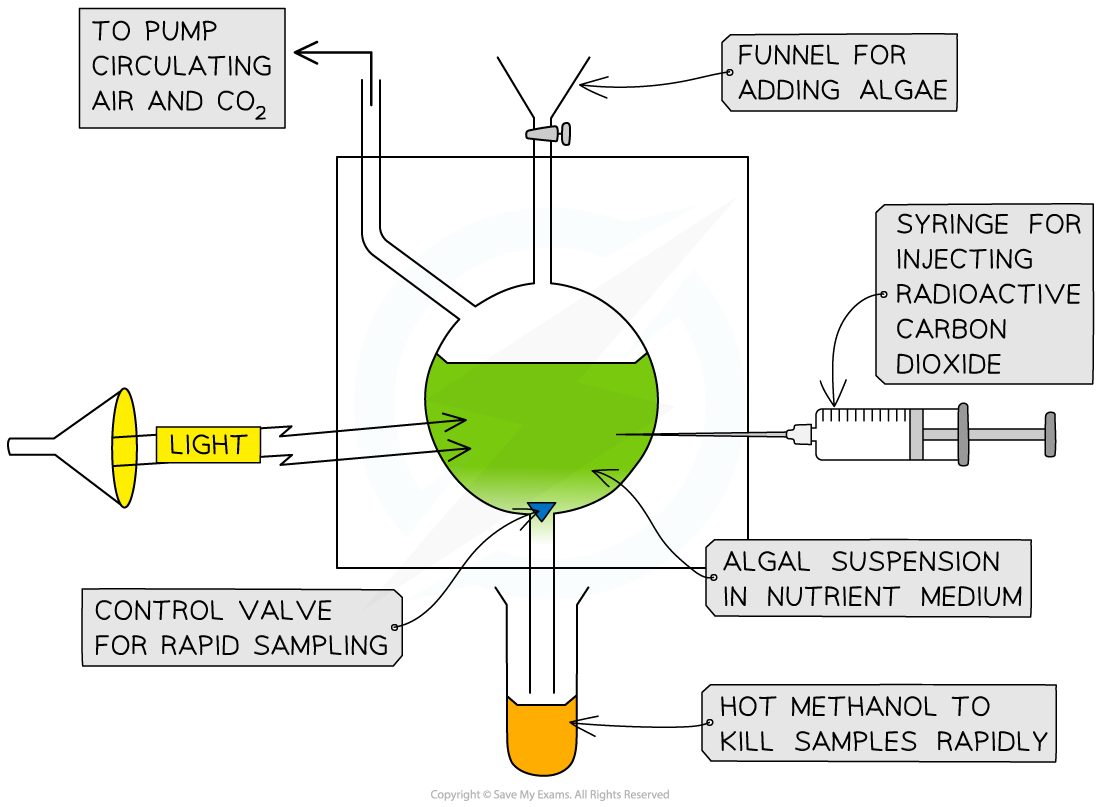- 翰林提供学术活动、国际课程、科研项目一站式留学背景提升服务!
- 400 888 0080
IB DP Biology: HL复习笔记8.3.4 Investigating Carbon Fixation in Photosynthesis
Investigating Carbon Fixation in Photosynthesis
NOS: Developments in scientific research follow improvements in apparatus: sources of 14C and autoradiography enabled Calvin to elucidate the pathways of carbon fixation
- The Calvin cycle was named after American biochemist Melvin Calvin for his work in mapping the complete conversion of carbon dioxide to glucose
- The techniques used at the time were novel and showed developments in scientific research
- Calvin developed methods for growing algae in an apparatus he named "the lollipop" due to its shape
- This apparatus enabled Calvin to introduce radioactive carbon dioxide to the algae in order to study photosynthesis
- He also used paper chromatography and production of x-ray chromatograms to enable Calvin to identify compounds using in reactions during photosynthesis
- His approaches and methods were novel at the time and were only possible because of advancements in apparatus and technologies
- The experiments performed by Calvin show process of using radioactive carbon dioxide and autoradiography in explaining the reactions of the Calvin Cycle:
- Radioactively labeled carbon-14 (14C) was introduced to the algae Chlorellain an apparatus called a lollipop (the experiments are sometimes referred to as the “lollipop experiment” due to the shape of the apparatus)
- Light was shone on the lollipop vessel containing the Chlorella to induce photosynthesis and carbon-14 was incorporated into the algae
- After varying time periods the algae was killed by heated alcohol which denatures proteins and enzymes within the cells and stops metabolic processes
- The pathway of the radioactive carbon was mapped and analysed throughout the algae using two-dimensional paper chromatography
- Chromatography separated out the different carbon compounds that had been made by the algae
- Any radioactive carbon-14 atoms (that had been incorporated into either intermediates or products of photosynthesis) were identified using autoradiography (x-ray)
- By comparing the different time periods in which the carbon compounds formed Calvin was able to map the order in which they were generated
- The results of the experiments showed that carbon was converted to carbohydrates during the light-independent reactions of photosynthesis
- Today, the method Calvin used is called “feeding experiments”

Calvin’s lollipop experiments for determining the reactions in the light-independent reaction
转载自savemyexams

早鸟钜惠!翰林2025暑期班课上线

最新发布
© 2025. All Rights Reserved. 沪ICP备2023009024号-1








